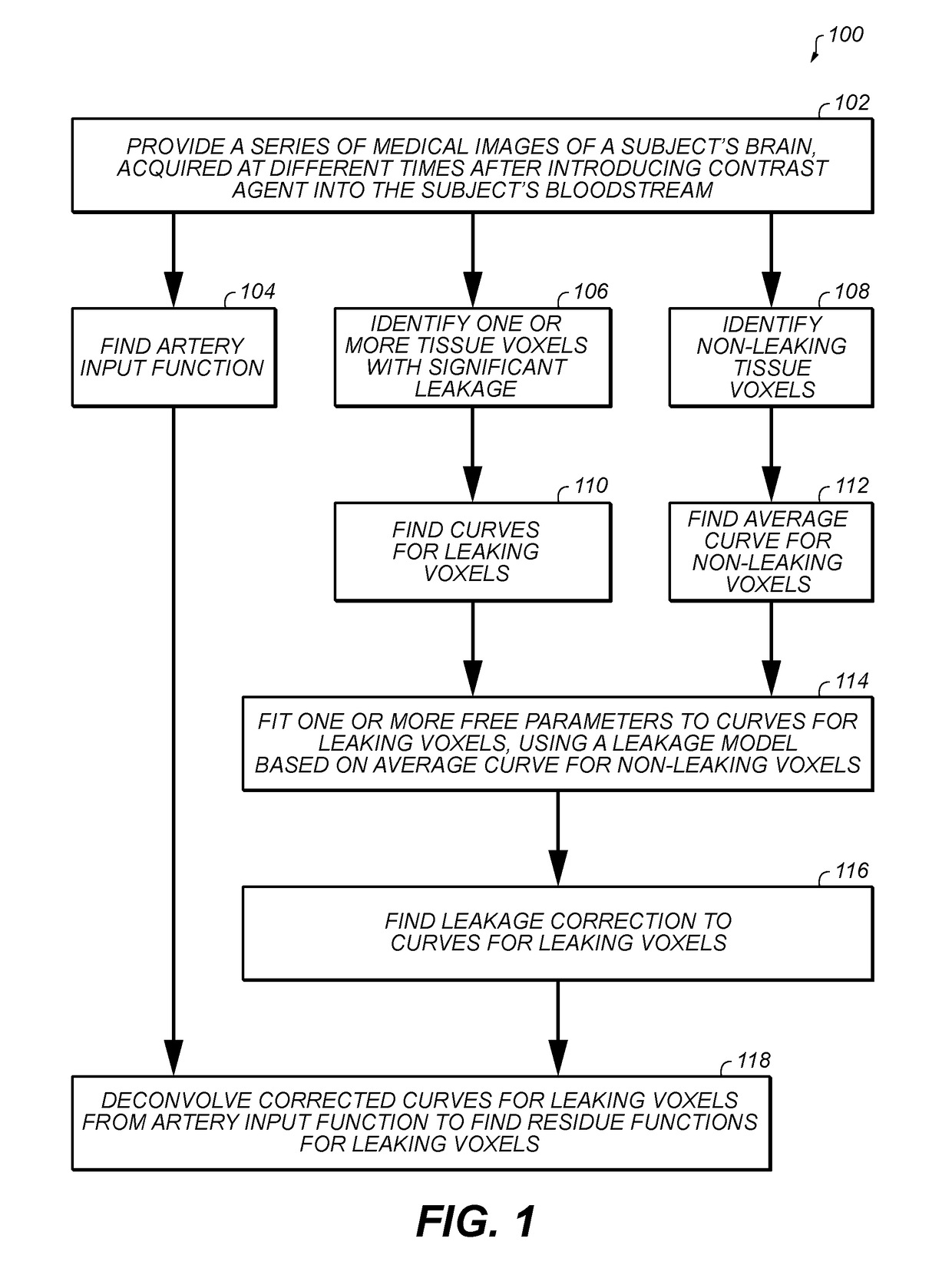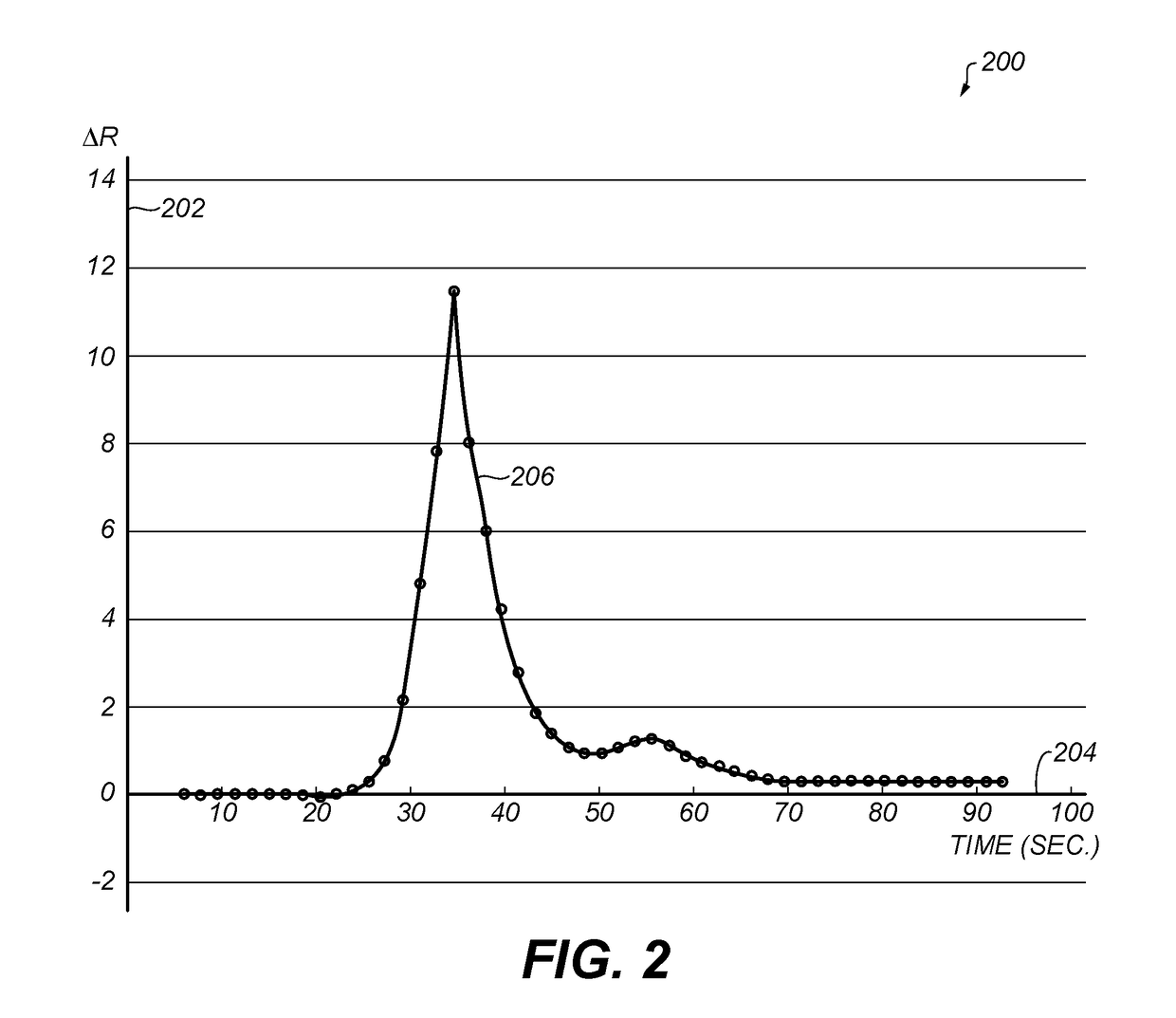Calculation of perfusion parameters in medical imaging
a perfusion parameter and imaging technology, applied in the field of finding perfusion parameters from medical images, can solve the problems of extremely heterogeneous hemodynamics and probably not a good assumption
- Summary
- Abstract
- Description
- Claims
- Application Information
AI Technical Summary
Benefits of technology
Problems solved by technology
Method used
Image
Examples
Embodiment Construction
[0046]The present invention, in some embodiments thereof, relates to a method of finding perfusion parameters from medical images and, more particularly, but not exclusively, to a method of finding cerebral perfusion parameters from MRI or CT images of the brain.
[0047]An aspect of some embodiments of the invention concerns a method of finding a perfusion residue function, at different positions in brain tissue of a subject, using data derived from a series of medical images of the tissue acquired at a plurality of successive times after introducing a contrast agent into the subject's bloodstream, and correcting the measured concentration of contrast agent in the capillaries at each voxel for leakage of the contrast agent into the extravascular extracellular space (EES). The method first obtains a signal as a function of time for concentration of contrast agent in the capillaries averaged over voxels that do not exhibit leakage, and initially assumes that the same function applies to...
PUM
 Login to View More
Login to View More Abstract
Description
Claims
Application Information
 Login to View More
Login to View More - R&D
- Intellectual Property
- Life Sciences
- Materials
- Tech Scout
- Unparalleled Data Quality
- Higher Quality Content
- 60% Fewer Hallucinations
Browse by: Latest US Patents, China's latest patents, Technical Efficacy Thesaurus, Application Domain, Technology Topic, Popular Technical Reports.
© 2025 PatSnap. All rights reserved.Legal|Privacy policy|Modern Slavery Act Transparency Statement|Sitemap|About US| Contact US: help@patsnap.com



